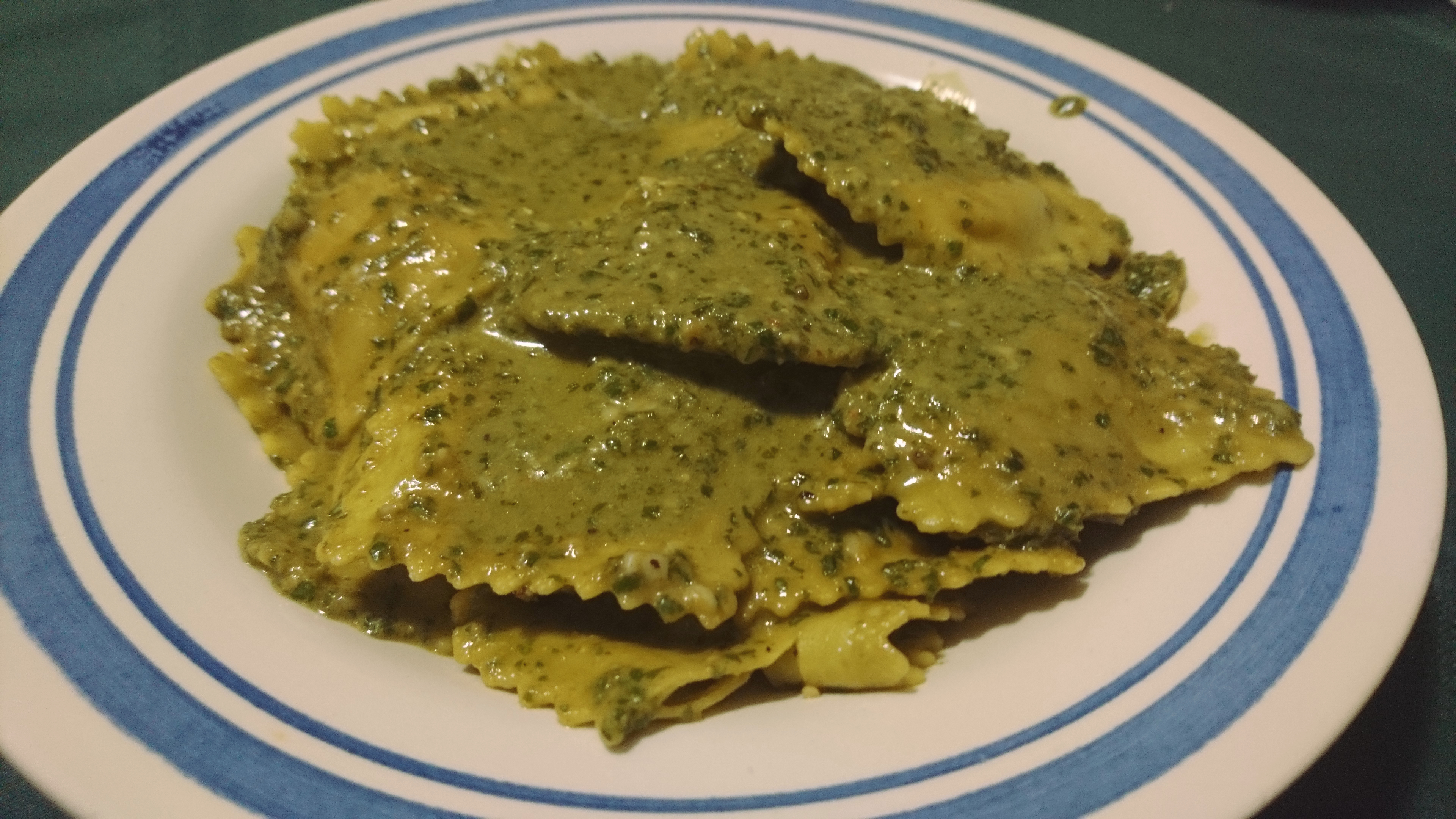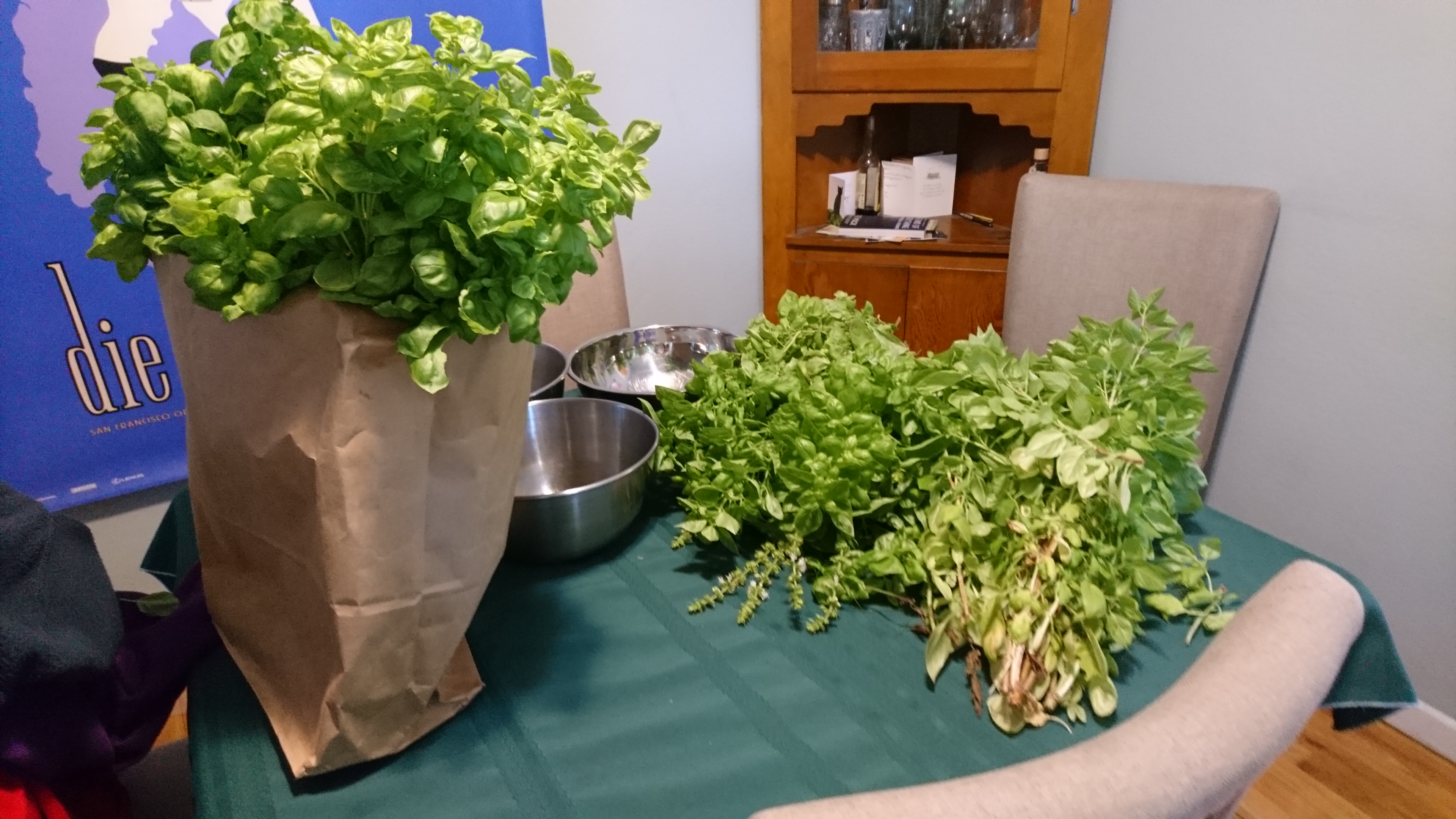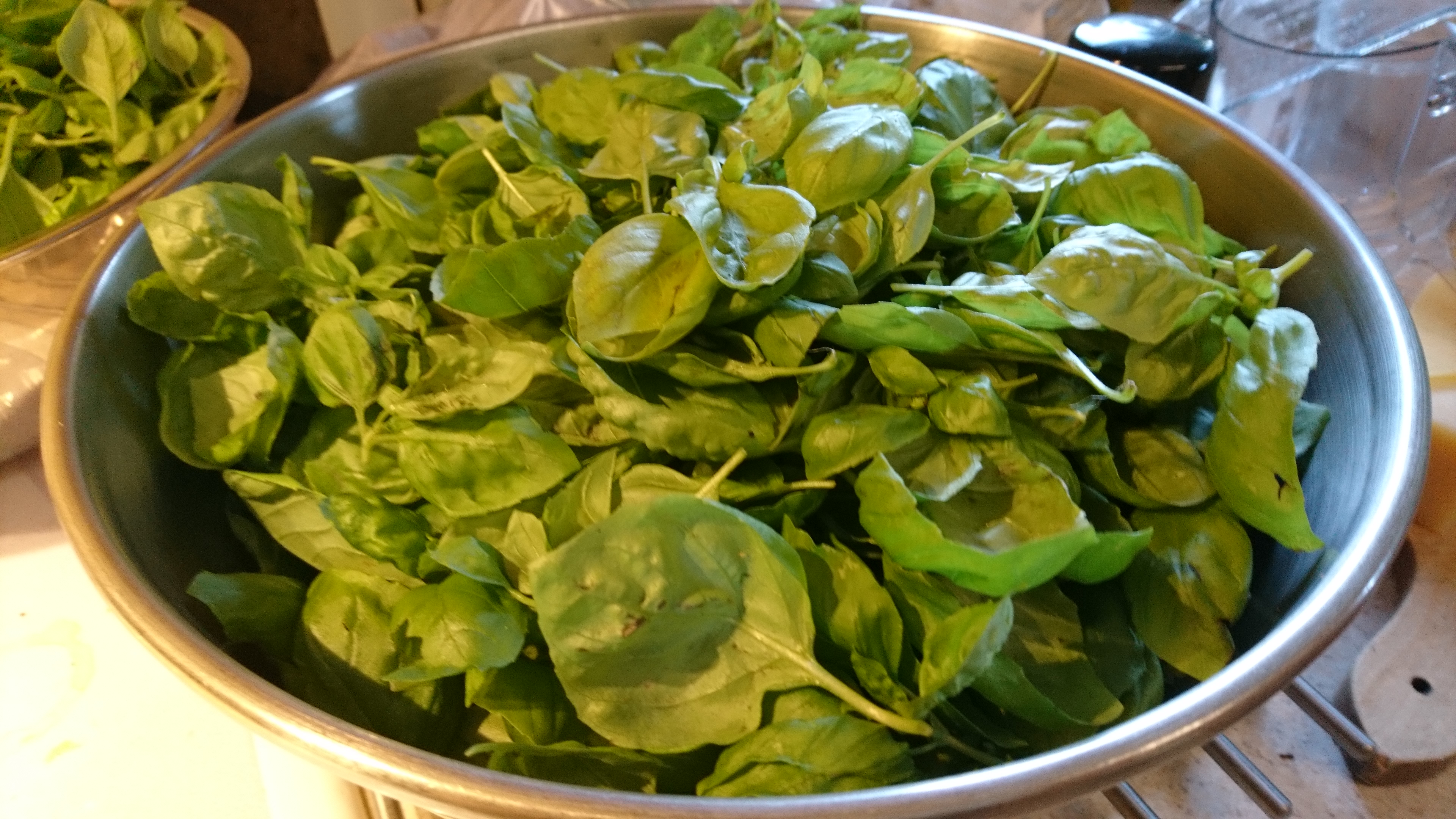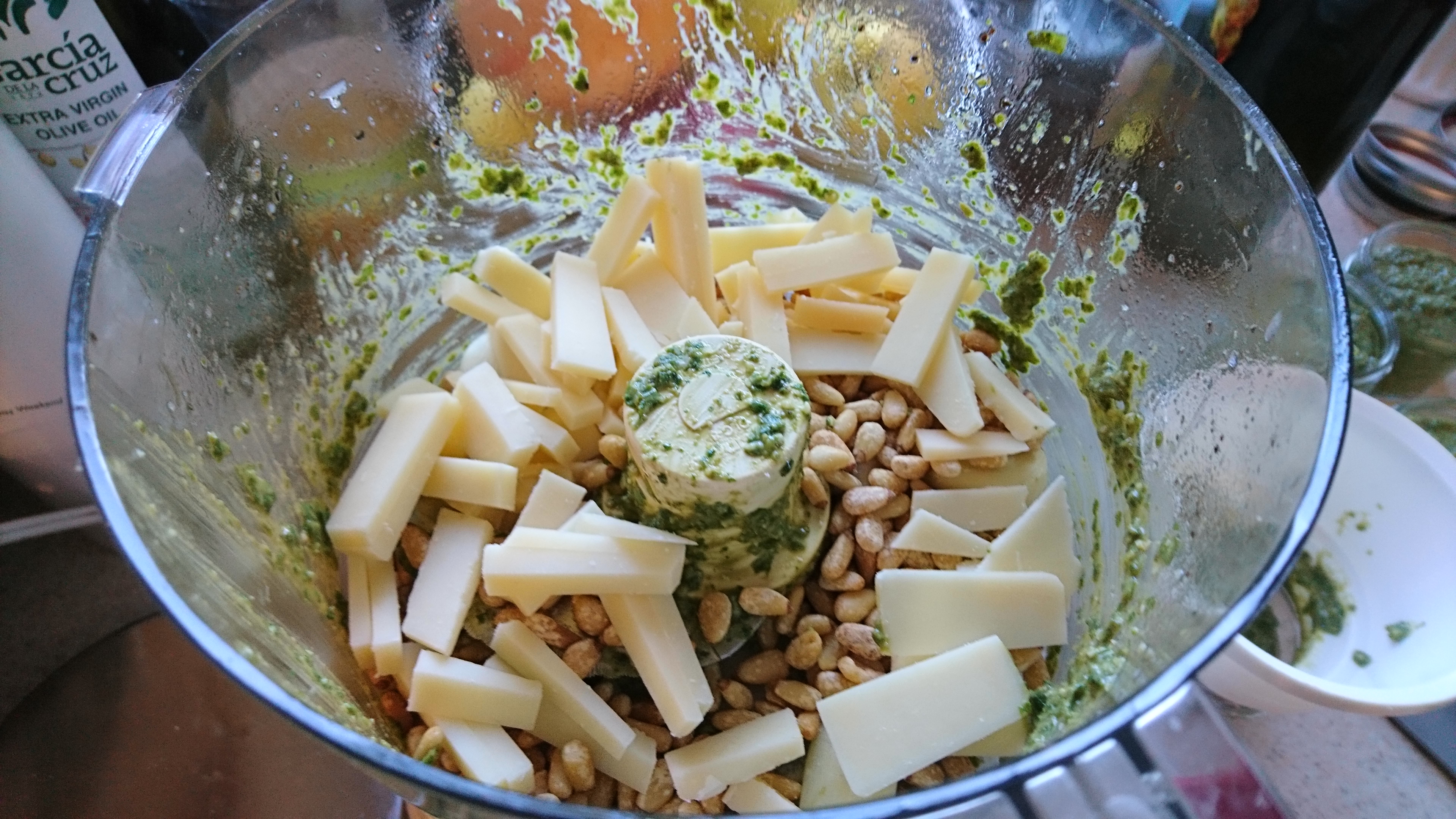pesto production
In Portland, it is once again final basil harvest. Any basil that's left in the garden will go to seed or just wilt on the cold nights, so we turn it into two things to last the rest of the year: dried basil, and pesto.
This is a recipe for preparing large quantities of pesto in the food processor. There are other ways to make pesto -- mortar & pestle, blender, hard-core knife work -- but this one is for the FP, because it's really the best tool for making a gallon of pesto to freeze for the winter.
Now, I've written about making pesto before, but I thought that recipe could use a bit more quantity precision, as well as a photo essay on exactly how to prepare and store it. So, here goes.
First, harvest all your basil and strip the leaves off the stems. Some tender stems and blossoms are fine, since we're going to puree it, but no woody stems. This will take a while. If not making the pesto immediately, bag and refrigerate for up to 24 hours.
See how dirty your basil is. It's best to avoid washing if you can, because then you need to dry it. If the bottom leaves are dirty, I usally discard those instead of washing.
Now, here's the quantities of ingredients we're working with per 11-cup food processor batch. If you have a larger FP, you could try scaling up, but I recommend instead just having it slightly less full. Where weights are given, they are more precise than the volume measurements are.
food processor pesto batch
- 3.5oz or 1/2 cup pine nuts
- 3.5oz parmesan, parmigiano, or grana padano cheese
- 1oz or 6-8 cloves peeled garlic
- 4oz or 5-6 cups loosely packed basil leaves
- 1/2 cup good olive oil (plus more for storage)
- 1 tsp table salt
- 1/2 tsp fresh-ground black pepper
- 0 to 5 Tbs water
Equipment: 11cup or 14cup food processor, baking sheets, knife or grater, spatula, measuring cups and spoons, scale, and jar funnel.
First, toast the pine nuts and the garlic. You're looking here to bring out the nutty flavors in the pine nuts, and to tame the bite of the garlic (mostly so that you can add more of it). Heat your oven to 375F and put the peeled garlic cloves and the pine nuts on baking sheets, and toast for 6-12 minutes, checking periodically. You'll know they're ready when the nuts have turned a very pale brown, and the garlic is slightly spongey to the touch (and you can eat a clove without it blasting you). It's better to under-toast here than to burn anything.
Cut the cheese into small pieces, or grate it with the large holes of a grater. It's going to get ground down in the FP, but you want it to start in small pieces first or it won't grind as fast as the other ingredients. Put the cheese, pine nuts, and garlic into the FP.
Turn the FP on and grind them until they resemble a coarse meal, like bulgur wheat. Don't pulse, it won't work well, just run it continously for 30 to 90 seconds depending on your unit.
Now, add the basil. In my 11-cup FP, I add enough basil to fill it to the top. If yours is a different size, fill accordingly. You'll be adding some 5-6 cups of loosely packed basil, or 4oz if you want to do it by weight. Pour on the 1/2 cup olive oil, the salt, and the pepper.
Now, turn on the FP and run it until the leaves incorporate, 1-3 minutes. Have some patience here; at first it'll look like the FP is just blending the nuts and garlic and isn't grabbing any leaves, and then suddenly they'll all go. When all the leaves are being chopped, stop the FP and scrape down the sides for any stuck leaves or bits of cheese, and then finish your puree with around 20 seconds more.
Now, judgement call time: see how creamy your pesto looks. If you had to wash the leaves, it'll probably already be there. If they were dry, you might need to add a little water, anywhere from 1 tablespoon to 5. Pulse the FP one more time, and check the texture. It should look like this:
You just made 13fl.oz. to 17fl.oz. of pesto! That's enough for two family-sized bowls of pasta, or 4-5 individual servings, so you want to put some away. Which means freezing, because there's no way to make pesto shelf-stable without cooking it, which would then ruin the sauce.
So, time to jar up. I recommend using 4oz jars or plastic containers, because 4oz is the right size for a small pasta serving (first course for two), two personal-sized pizzas, or a 2lbs filet of halibut. And if you need to feed more people, you can combine 4oz jars. But if you put it away in 8oz jars or pints, you'll find yourself with a half-full jar in the fridge which will expire quickly. Pesto does not keep.
So get out your jar funnel and start filling jars. Leave 1/4" headroom in each jar for ice expansion. Tap down the pesto in each jar to drive out as many air bubbles as possible, and then add a protective layer of olive oil (around 1 tsp) on top of each. Seal, and put in the freezer as soon as you can.
Now, repeat that until your basil is all gone and you have too much pesto to fit in the freezer. Give some to the neighbors.
See my older version of the recipe for notes on the ingredients.
Variations and substitutions:
- you could probably make this with vegan cheese, but I'm not sure how well it would freeze. I'd be worried about the cheese separating.
- you can definitely substitute other hard grating cheeses for the parmesan, such as asiago, dry jack, piave vecchio, or even a very aged manchego or comte. Avoid salted cheeses like pecorino romano, though, as they will make the pesto too salty.
- walnuts are also traditional, and good pestos can be made with pistacios.
- punch it up a bit by adding some red pepper flakes or cayenne pepper.









